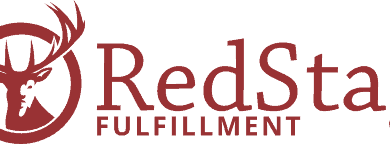Difference Between the Dutch and German language?
What is German?
German is a West Germanic language that is used mainly in Central Europe. It is the most widely used in Austria, Switzerland, Germany, South Tyrol, and Liechtenstein. German is one of the principal languages of the globe. It is the most widely used native language in the European Union; it is also the first language of approximately 95 million people throughout the world. Almost 80 million people use it as their second language.
German vocabulary is mainly inspired by the Germanic member of the Indo-European language family. Several German words are acquired from Latin and Greek; some words are also received from French and English. The German language has more expressions than English; it has three genders and four cases, and the verbs are conjugated according to person and amount. German has the equivalent letter system as Dutch, but some letters are declared separately.
What is Dutch?
Dutch is a West Germanic language that is used in the European Union. The bulk of the population of the Netherlands and nearly sixty percent of the population Belgium use it as the first language. Almost 23 million people speak Dutch as their primary language, and another 5 million people use it as a second language. Dutch is closely linked to both German and English, and it is said that Dutch is more or less between English and German. When we think about the aspects like grammar and verb morphology, Dutch is grammatically related to German. But its vocabulary mostly includes Germanic words; there are more loanwords from Romance languages than German but less than English. Dutch has not experienced the High German consonant shift; it has also mostly dropped the use of the subjunctive and case system. Dutch also practices the Latin script. This is the reason people always in need to translate Dutch into German.
Both Dutch and German concern to the West Germanic language of Indo-European language family. Because they share common roots and are related to the same geographical area, there are marked differences between these two languages. Both German and Dutch speakers often find it easy to learn and understand the other language due to the few similarities. Though, each language has its unique characteristics, and so do German and Dutch. There are several differences between Dutch and German-based on grammar, spelling, pronunciation, and vocabulary which need to consider while translating Dutch to German.
Following are the main differences between Dutch and German Language:
- Dutch differs from English and German language concerning the grammar systems of both languages.
- Dutch language is rare relative to German and follows the pattern of the formation of words. The Dutch language makes use of the order of words in and their usage in clauses.
- In Dutch, you must never stop a (non-loan) word with two of the identical letter. Even though ga (to go) has an “open” a sound, you cannot write it as gaa. And will (want, as in German) cannot be written as will. Also ‘c’ is used in Dutch at the start of terms (corrigent, certificate, etc.), and only ever done so in loan words in German.
- Dutch is mainly used in the Netherlands and Belgium. German is primarily used in Germany, Austria, Switzerland, South Tyrol, and Liechtenstein.
- Dutch has fewer native speakers than German.
- Dutch is not as famous as German.
- Nederlandse Taalunie regulates Dutch officially, and German is not regulated officially.
- Dutch no longer uses the case system, and German has four cases.
- Dutch does not use subjunctive form and German uses a subjunctive form.
- Germanic and Romance languages influence Dutch vocabulary, and Germanic languages affect German dictionary.
- Most of the German language has been practiced to obtain the vocabulary for the Dutch language.
- German pronunciation, for some letters, uses aspiration, whereas Dutch does not, e.g., for the letter K.
- The Dutch language does more use of romance loans as compared to the German language.
- German has got more difficult declensions and subjunctive tense, while Dutch is perceived as more straightforward.
- Dutch is a language in Germany, that is being used in many regions of Europe.
- German is another language of West Germany. This language is also associated with English.
- Dutch has been determined to be liable for giving birth to many languages that are currently being used in Southern Africa. And Afrikaans is one of these languages that have been received due to Dutch.
- In European nations, it is used in Austria and Germany, and numerous people in Switzerland also use this language. Some other areas in the US, Brazil and other places also speak German.
Now, of course, there are a considerable number of differences between the Dutch and German language. Each language is unique, with its history and growth from when they broke up from a common ancestor.




